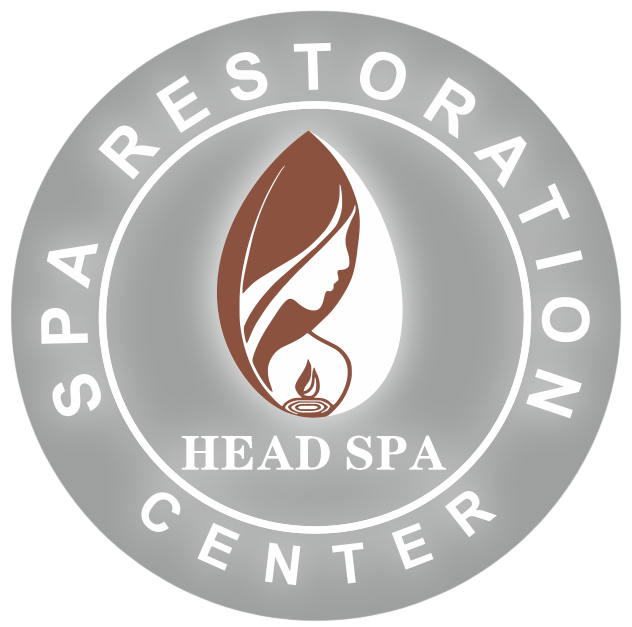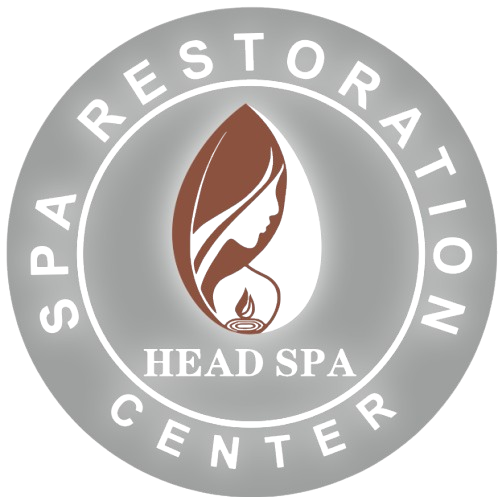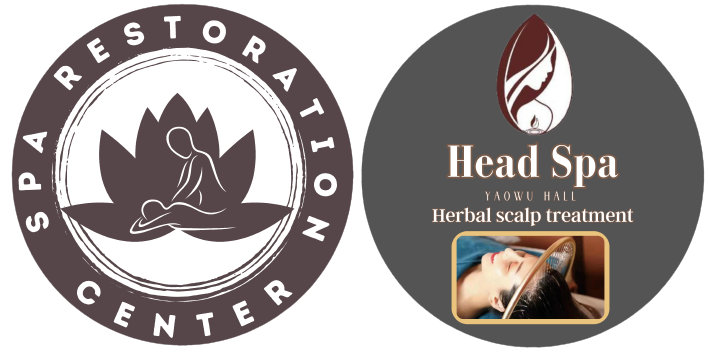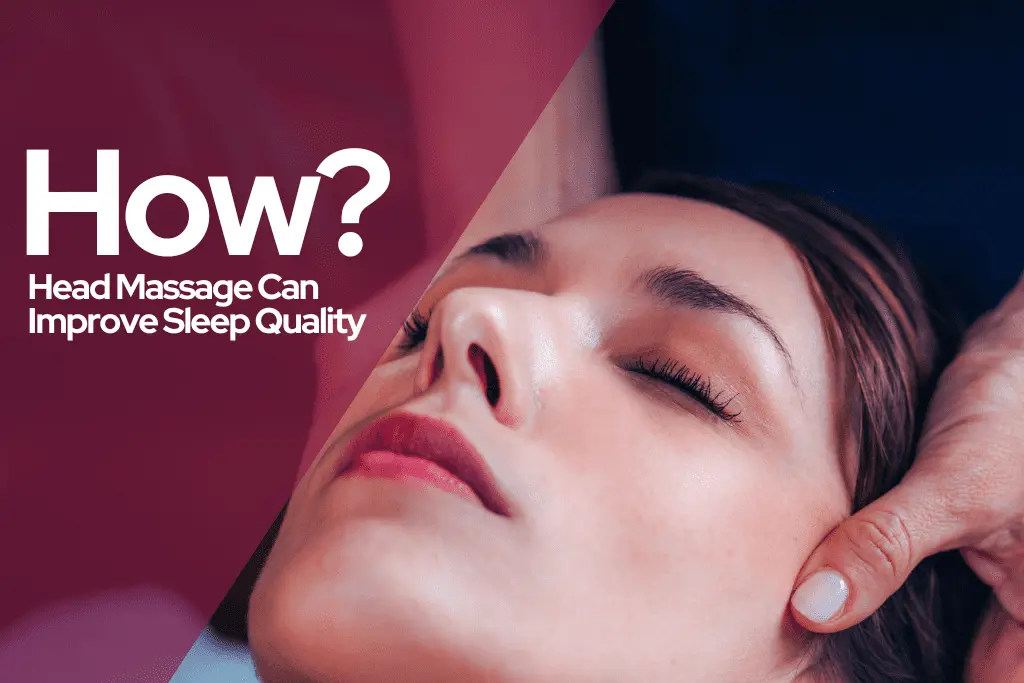
How Head Massage Can Improve Your Sleep Quality
Ever hoped that you could get a decent night’s sleep on and off? If so, then you are not alone.
For some, this one strikes a familiar chord. Millions of people around the world battle insomnia and other disorders of sleep on a daily basis.
In this blog, we will explore the science of head massage and sleep, learn how it can reduce stress, discuss techniques that induce relaxation, and reveal the secrets of a better night’s sleep.
We will also look into the effects of head massage on the brain and then discuss some important tips to ensure that the process will be safe and beneficial.
Keep the lights low and learn how to give yourself a head rub so that you can relax and sleep for real.
How Does Head and Scalp Massage Activate the Nervous System for Better Sleep?
Not only is a scalp massage one of the most heavenly experiences, consider it an even more effective way to trigger your parasympathetic nervous system, aka the part of your nervous system that’s responsible for rest and recovery. A little scalp pressure will activate nerve endings, which send calming messages all over the body.
Such a type of scalp massage not only relieves stress but also decreases the tension headaches and also helps dissolve the muscles that might create disturbance while falling asleep. In addition, it improves blood flow to the brain, which can facilitate a clean and calm frame of mind, making it easier to fall asleep and maintain a positive mood before bed.
Reducing the effects of stress
Massage to the head and scalp can help relax the muscles in the shoulders and the neck, which is also a common place to hold tension. The stimulus of calm indicates to a brain to alter its state to a peak performance for sleep.
Serotonin Release
A head massage in itself gives a small amount of pressure at the scalp level itself and is a known trigger for the release of serotonin in the body. Serotonin is an important hormone that has a role in improving mood and provides a precursor to sleep hormone melatonin.
Cortisol Levels Drop
Effective head massage techniques can decrease the levels of the stress hormone cortisol, which is a hormone that the body produces after the body is stressed. This in turn calms the nervous system even more, making it much easier to drift off to sleep.
Improvements in Blood Flow
The blood flow enhances with massage; therefore, more of it will reach the brain. This not only allows for more clarity of mind but also helps you stay on track with your sleep schedule, which is what makes falling asleep and staying asleep so much easier.
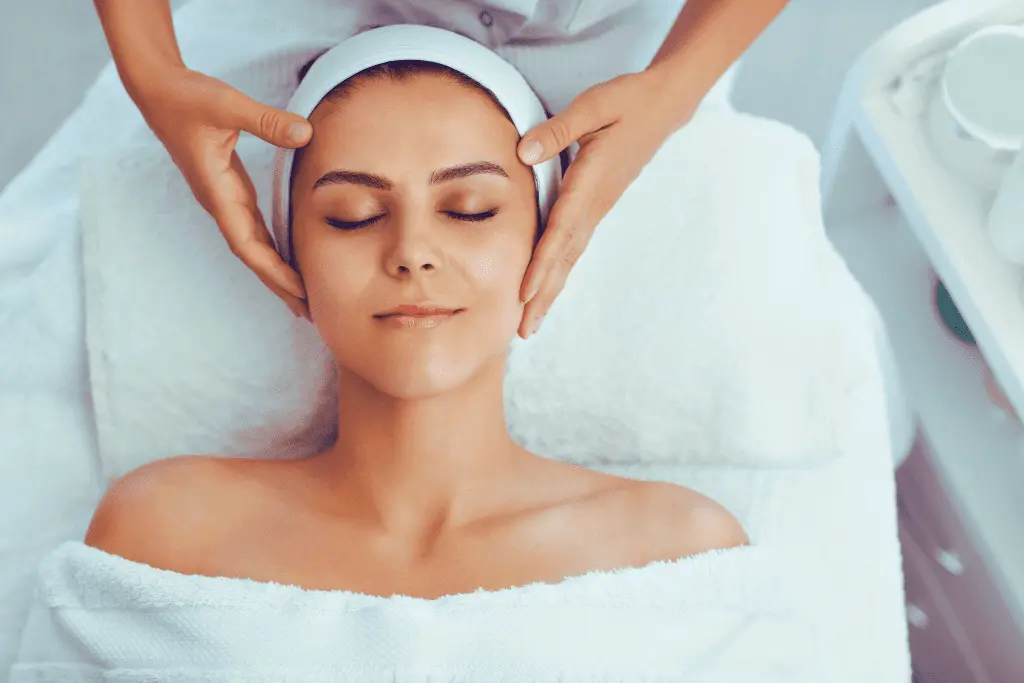
How a Simple Head Massage Can Relieve Your Stress
A head massage is a great way to calm down and get back to normal after a long day. The reason it performs in this manner is because it affects the stress response manifested physically or psychologically. Here are a few ways a short head massage can help you feel better:
Relaxation of the Muscles
The head and neck hold a lot of tension. A slight massage at certain places on your body opens the muscles, and the opened muscles give attention signals to the brain to relax; thus, the body and the feeling of stress will be reduced.
Pressure Point Activation
There are noted locations on the head that, if squeezed, could potentially trigger the release of endorphins. Endorphins are natural chemicals in our body that can help to boost mood and reduce pain. When you massage these areas, it could make you feel relaxed and happy.
Boosts Blood Circulation
A direct effect of head massages is improved blood circulation, leading to elevated oxygen delivery to the brain and removing stressful hormones like cortisol. Completing this task would have you feeling calmer and more focused.
Relaxing the Body
The soothing movements done during head massages help to enhance the body feeling better. It can heal the body and can also induce peacefulness.
Encouraging Mindfulness
One way of meditating during a massage is to focus on the sensations you are feeling. This gives your mind a rest by keeping you in the present moment and stopping you from worrying.
Regular head massage can be a simple and effective way to relieve stress and improve your overall health daily.
What Type of Head Massage Is Best for Improving Your Sleep?
Finding the right type of head massage for you can be a great opportunity to explore ways to sleep better, release stress, and bring your body and mind back into equilibrium. And, because each massage style comes with its own set of benefits, whether that be relieving muscle tension, battling insomnia, or simply allowing yourself to indulge in a truly relaxing experience, there is an answer to fit every need.
Scalp Massage
A traditional method of doing this is to use your fingers or a massage tool to rub the scalp with slight circular movements in slow motion. Blood circulation improves with scalp massage; it can relieve tension and headaches, and it helps to facilitate the secretion of serotonin in your body, the hormone that gives way to melatonin, the hormone that makes us sleep. One of the simplest ways to help unwind, whether done professionally or as a personal message.
Indian Head Massage (Champissage)
Champissage is rooted in Ayurveda and is targeted at the head, neck, shoulders, and upper back. This is particularly good for those who carry their stress in their shoulders. It helps harmonize the energy within the body, reduces muscle tension, relaxes the body, and makes falling asleep and having restful sleep easier.
Shiatsu Head Massage
Shiatsu is a Japanese-inspired, acupressure-based type of therapy that comes from finger pressure on the scalp and face along specific energy meridians. It triggers the relaxation response, rebalances the nervous system, and relieves stress and anxiety which are two of the biggest sleep destroyers. Ideal if you are looking for a relaxing but therapeutic massage.
Thai Head Massage
By using elements of classic Thai massage, you will experience rhythmic pressure, acupressure across points, and stretching motions across the head, face, and upper body. This works well when it comes to releasing stuck energy as well as muscle tension, particularly in the neck and shoulder areas. This calming effect benefits sleep and emotional stability.
Aromatherapy Head Massage
A cross between very gentle aromatherapy and massage, it is both profoundly soothing and holistic. This massage incorporates essential oils such as lavender, chamomile or sandalwood, which help to amplify the body’s natural response to relaxation. This is particularly productive for decreasing cortisol and improving mood—great news for anyone who suffers from anxiety-related insomnia.
Reflexology Head Massage
This method puts pressure on certain reflex points in the scalp, which correlate with other body parts. Stimulating these pressure points helps to enhance circulation, detoxify, and help release the hormones that calm you down. This is such a gentle but potent way to bolster that restorative deep sleep naturally.
What Are the Essential Techniques for a Sleep-Inducing Head Massage?
You will find different methods that can help you fall asleep without any hassle with a simple head massage. If you want the head rub to strike you into sleep, there are a few things to remember when giving yourself the head rub:
- You can start with a light touch: Start clocking the hair with soft and slow strokes and gradually calm the hair down. This allows the body to relax even more, which then allows the body to start relaxing.
- Focus on Pressure Points: You need to be aware of pressure points. Using the knuckles, apply pressure to the temples and base of the skull. Circle these areas with light pressure. Moreover, this releases tension and mental fatigue.
- Use Essential Oils: Put Essential Oils to Use As we all know, the aromatherapy oils of lavender, chamomile and peppermint improve people’s comfort. You can either put a couple of drops on your fingertips or mix it with another oil before a massage. You’ll feel more relaxed than ever when you mix the aroma during the massage.
- Experiment with Various Techniques: You can alternate between tapping, kneading, and circular movements. This version provides full stimulation to the scalp, all the way to it, giving a sense of calmness.
- Don’t Just Massage the Head: You must also massage your entire body, not just your head. Make fluid-flowing strokes to help relieve tension that may have built up in the neck and shoulders (common places for stress to hang out).
- End Softly: Use the lightest touches to conclude the massage, which becomes softer during the massage. As a result, the body knows that the lesson is over, and the effects of relaxation can fully take effect.
These techniques, when applied to head massage, help you fall asleep more effortlessly. These can deeply relax the mind and body.
utilized during a head massage, drifting off to sleep is facilitated more easily. They have the ability to profoundly calm both the mind and the body.

How Head Massage Can Improve Your Sleep Quality
Ever hoped that you could get a decent night’s sleep on and off? If so, then you are not alone.
For some, this one strikes a familiar chord. Millions of people around the world battle insomnia and other disorders of sleep on a daily basis.
In this blog, we will explore the science of head massage and sleep, learn how it can reduce stress, discuss techniques that induce relaxation, and reveal the secrets of a better night’s sleep.
We will also look into the effects of head massage on the brain and then discuss some important tips to ensure that the process will be safe and beneficial.
Keep the lights low and learn how to give yourself a head rub so that you can relax and sleep for real.
How Does Head and Scalp Massage Activate the Nervous System for Better Sleep?
Not only is a scalp massage one of the most heavenly experiences, consider it an even more effective way to trigger your parasympathetic nervous system, aka the part of your nervous system that’s responsible for rest and recovery. A little scalp pressure will activate nerve endings, which send calming messages all over the body.
Such a type of scalp massage not only relieves stress but also decreases the tension headaches and also helps dissolve the muscles that might create disturbance while falling asleep. In addition, it improves blood flow to the brain, which can facilitate a clean and calm frame of mind, making it easier to fall asleep and maintain a positive mood before bed.
Reducing the effects of stress
Massage to the head and scalp can help relax the muscles in the shoulders and the neck, which is also a common place to hold tension. The stimulus of calm indicates to a brain to alter its state to a peak performance for sleep.
Serotonin Release
A head massage in itself gives a small amount of pressure at the scalp level itself and is a known trigger for the release of serotonin in the body. Serotonin is an important hormone that has a role in improving mood and provides a precursor to sleep hormone melatonin.
Cortisol Levels Drop
Effective head massage techniques can decrease the levels of the stress hormone cortisol, which is a hormone that the body produces after the body is stressed. This in turn calms the nervous system even more, making it much easier to drift off to sleep.
Improvements in Blood Flow
The blood flow enhances with massage; therefore, more of it will reach the brain. This not only allows for more clarity of mind but also helps you stay on track with your sleep schedule, which is what makes falling asleep and staying asleep so much easier.
How a Simple Head Massage Can Relieve Your Stress
A head massage is a great way to calm down and get back to normal after a long day. The reason it performs in this manner is because it affects the stress response manifested physically or psychologically. Here are a few ways a short head massage can help you feel better:
Relaxation of the Muscles
The head and neck hold a lot of tension. A slight massage at certain places on your body opens the muscles, and the opened muscles give attention signals to the brain to relax; thus, the body and the feeling of stress will be reduced.
Pressure Point Activation
There are noted locations on the head that, if squeezed, could potentially trigger the release of endorphins. Endorphins are natural chemicals in our body that can help to boost mood and reduce pain. When you massage these areas, it could make you feel relaxed and happy.
Boosts Blood Circulation
A direct effect of head massages is improved blood circulation, leading to elevated oxygen delivery to the brain and removing stressful hormones like cortisol. Completing this task would have you feeling calmer and more focused.
Relaxing the Body
The soothing movements done during head massages help to enhance the body feeling better. It can heal the body and can also induce peacefulness.
Encouraging Mindfulness
One way of meditating during a massage is to focus on the sensations you are feeling. This gives your mind a rest by keeping you in the present moment and stopping you from worrying.
Regular head massage can be a simple and effective way to relieve stress and improve your overall health daily.
What Type of Head Massage Is Best for Improving Your Sleep?
Finding the right type of head massage for you can be a great opportunity to explore ways to sleep better, release stress, and bring your body and mind back into equilibrium. And, because each massage style comes with its own set of benefits, whether that be relieving muscle tension, battling insomnia, or simply allowing yourself to indulge in a truly relaxing experience, there is an answer to fit every need.
Scalp Massage
A traditional method of doing this is to use your fingers or a massage tool to rub the scalp with slight circular movements in slow motion. Blood circulation improves with scalp massage; it can relieve tension and headaches, and it helps to facilitate the secretion of serotonin in your body, the hormone that gives way to melatonin, the hormone that makes us sleep. One of the simplest ways to help unwind, whether done professionally or as a personal message.
Indian Head Massage (Champissage)
Champissage is rooted in Ayurveda and is targeted at the head, neck, shoulders, and upper back. This is particularly good for those who carry their stress in their shoulders. It helps harmonize the energy within the body, reduces muscle tension, relaxes the body, and makes falling asleep and having restful sleep easier.
Shiatsu Head Massage
Shiatsu is a Japanese-inspired, acupressure-based type of therapy that comes from finger pressure on the scalp and face along specific energy meridians. It triggers the relaxation response, rebalances the nervous system, and relieves stress and anxiety which are two of the biggest sleep destroyers. Ideal if you are looking for a relaxing but therapeutic massage.
Thai Head Massage
By using elements of classic Thai massage, you will experience rhythmic pressure, acupressure across points, and stretching motions across the head, face, and upper body. This works well when it comes to releasing stuck energy as well as muscle tension, particularly in the neck and shoulder areas. This calming effect benefits sleep and emotional stability.
Aromatherapy Head Massage
A cross between very gentle aromatherapy and massage, it is both profoundly soothing and holistic. This massage incorporates essential oils such as lavender, chamomile or sandalwood, which help to amplify the body’s natural response to relaxation. This is particularly productive for decreasing cortisol and improving mood—great news for anyone who suffers from anxiety-related insomnia.
Reflexology Head Massage
This method puts pressure on certain reflex points in the scalp, which correlate with other body parts. Stimulating these pressure points helps to enhance circulation, detoxify, and help release the hormones that calm you down. This is such a gentle but potent way to bolster that restorative deep sleep naturally.
What Are the Essential Techniques for a Sleep-Inducing Head Massage?
You will find different methods that can help you fall asleep without any hassle with a simple head massage. If you want the head rub to strike you into sleep, there are a few things to remember when giving yourself the head rub:
- You can start with a light touch: Start clocking the hair with soft and slow strokes and gradually calm the hair down. This allows the body to relax even more, which then allows the body to start relaxing.
- Focus on Pressure Points: You need to be aware of pressure points. Using the knuckles, apply pressure to the temples and base of the skull. Circle these areas with light pressure. Moreover, this releases tension and mental fatigue.
- Use Essential Oils: Put Essential Oils to Use As we all know, the aromatherapy oils of lavender, chamomile and peppermint improve people’s comfort. You can either put a couple of drops on your fingertips or mix it with another oil before a massage. You’ll feel more relaxed than ever when you mix the aroma during the massage.
- Experiment with Various Techniques: You can alternate between tapping, kneading, and circular movements. This version provides full stimulation to the scalp, all the way to it, giving a sense of calmness.
- Don’t Just Massage the Head: You must also massage your entire body, not just your head. Make fluid-flowing strokes to help relieve tension that may have built up in the neck and shoulders (common places for stress to hang out).
- End Softly: Use the lightest touches to conclude the massage, which becomes softer during the massage. As a result, the body knows that the lesson is over, and the effects of relaxation can fully take effect.
These techniques, when applied to head massage, help you fall asleep more effortlessly. These can deeply relax the mind and body.
What Are the Key Benefits of Head Massage for Insomnia and Sleep Disorders?
Here are some major benefits of head massages that help people who can’t sleep or have other sleeping disorders. These benefits may not only improve sleep quality but also have the potential to improve health overall:
Helps You Unwind
By reducing the body’s response to stressful and anxious situations, a head massage will allow you to relax and get a better night’s sleep. If you feel calm, it will be easy to sleep well.
Stimulates Sleep Hormones
The scalp massages increase the production of serotonin, the hormone responsible for regulating sleep cycles, which is a precursor of melatonin. High levels of melatonin signal to the body that bedtime is near, so falling asleep and staying asleep are much easier.
Reducing Cortisol Levels
A calming head massage may even help decrease the stress hormone that keeps you from having a blissful night of sleep. Lower levels of cortisol mean you can sleep better and more soundly.
Boosts Circulation
Massage therefore alleviates stress and anxiety by increasing the supply of fresh, oxygenated blood to the brain and spinal cord. Good circulation can also ease headaches and migraines that are common to people who have trouble sleeping.
Deepens Breathing
The relaxing effect of a head massage will also, in a way, promote deeper breath and hence help us to enter and allow ourselves to stay in the deeper stages of sleep.
Reduces Tension
A massage on the head, neck and shoulder relieves tension and comes in handy for sound sleep. It might be useful if some problems of your body stop you from sleeping, for example, if you have a lot of pain, discomfort, or cannot sit still.
Is the brain affected after taking a head massage?
Head massage may cause a few good things to occur in the brain that are useful for relaxation and well-being:
More Neurotransmitters Released
Massage of the head causes more release of serotonin, dopamine, and other neurotransmitters. Dopamine talks to you about reward and pleasure, while serotonin talks to you, making you feel calm and nice. This combination can significantly lift your spirits and reduce stress.
Decreasing the level of stress hormone
Massage reduces cortisol, which is the major stress hormone of the body. By reducing cortisol, you are slowing the brain stress response cycle. Which helps you feel calm, healthy for sleep and at peace.
Improves Circulation
Massage improves blood flow to the brain & head. More circulation means more blood and more nutrients to the brain, so it can function more optimally and leave you feeling relaxed.
Activating the parasympathetic nervous system
The soft pressure and gentle movements of a head massage activate our parasympathetic nervous system (aka the “rest and digest” system). It is for this reason that the body relaxes deeply, reduces blood pressure level and the heart rate, and empowers the body to heal and grow.
Neural Stimulation
Head massage helps to soothe neural pathways, which will clear your mind and help in clear thinking. This can be extremely beneficial before bed because it prepares your mind for sweet dreams.
What precautions and tips ensure a safe head massage experience?
While head massages are incredibly wonderful, here are a few things you can do to ensure safety and comfort. Keep this in mind when either going to a therapist or doing a massage yourself.
- Be sure there are no known contraindications, such as pregnancy, COVID-19, or head injuries.
- Use light pressure on sensitive areas, including the eyes, temples, and throat.
- If you experience any adverse effects, like nausea or headaches, stop.
- Be sure to practice basic hand and nail hygiene so as not to irritate the scalp with the rest of the dirt.
- Use nice oils and lotions for massages.
- Find a comfortable position with your body, sitting or lying down.
- Give some feedback on the pressure if the therapist asks.
- Please ensure you hydrate well before and after the cleanse to maximize results.
- Do not go near it if you have migraines so severe or you have neurological problems.
- Do not rub dry the gap between the head bones.
- Seek out medical attention if the negative side effects persist.
- Nails should be clipped so that they do not scratch the scalp.
Conclusion
A head massage has many advantages besides basic relaxation. This is the most effective and natural way to beat insomnia and improve overnight sleep quality so that you are able to recharge yourself and your body and mind can get plenty of rest. Incorporating methods such as light feather strokes and using a few drops of essential oils prior to bed will lead to longer, deeper, and more restorative sleep.
Frequently Asked Question
Should You Use Essential Oils During a Head Massage?
Head massage with essential oils can enhance its benefits. But aromas like lavender, chamomile, or peppermint are staples in aromatherapy for a reason, because they still appeal to the senses and support the body in its natural process of relaxing.
A few drops before your session on the fingers or mixed with a carrier oil. This smell will cause your brain to relax when inhaling it, which means it is time to slow down.
What Are the Best Pressure Points for Sleep?
Stimulating specific pressure points on your scalp can boost relaxation and improve blood circulation. Focus on:
- Temples
- Base of the skull
- Between the eyebrows
- Behind the ears
These areas are closely linked to stress reduction and can help your brain enter a more restorative mode, essential for restful sleep.
Is Morning Massage Helpful for Long-Term Sleep Quality?
Absolutely. Getting a massage in the morning can help lower overall stress levels throughout the day, which may lead to an easier time unwinding in the evening. But it is a nice part of your overall sleep hygiene routine.
Morning massages increase blood circulation, decrease stress hormones, and set a peaceful tone for your day—contributing to better nighttime cycles.
Can massage really help improve your sleep quality?
Yes, massage can help improve your sleep by triggering the body’s relaxation response, which makes it easier to fall asleep and sleep deeply. Regular gentle massage, such as scalp massage or foot massage, helps relax your muscles, relieve stress, and promote profound relaxation, all essential for restorative sleep.
What types of massage are best for tension headaches and muscle tension?
Deep tissue massage is effective for muscle tension, tension headaches, and trigger point massage. These techniques are designed to release knots and tight areas that help to release the tension that has built up. A good massage therapist will find your pain points and eliminate the discomfort for the long term.
How does a spa treatment contribute to better sleep?
A head spa environment enhances relaxation and sleep by offering a really relaxing experience through soothing music, calming scents, and expert massage sessions. Treatments like acupressure, scalp massage, or foot massage promote a comfortable sleeping position and can significantly improve your sleep quality by reducing stress and physical tension.
Can self-massage or massage tools be effective for improving sleep?
Absolutely. Practicing self-massage with the help of massage tools can help reduce stress and muscle tightness that might disrupt sleep. While not a substitute for professional care, consistent use of tools for a relaxing massage can still offer long-term benefits, such as improved sleep quality and better overall relaxation.
